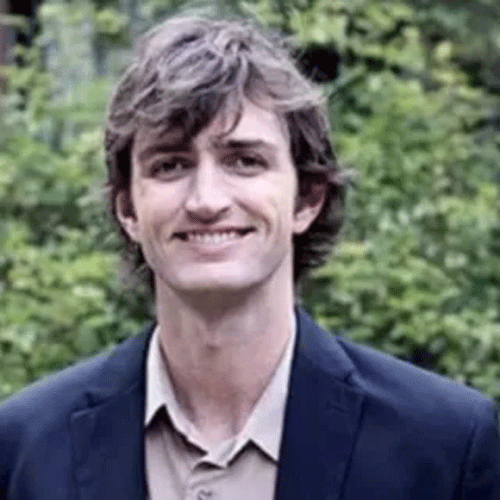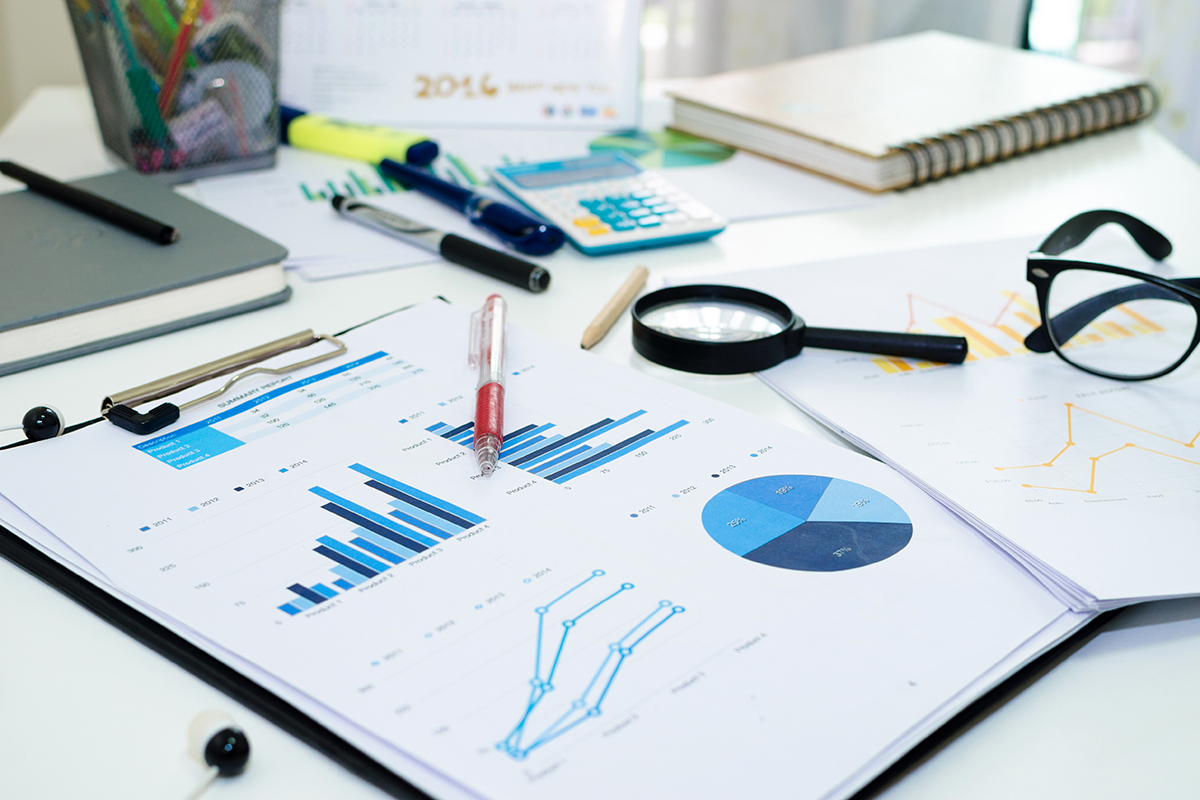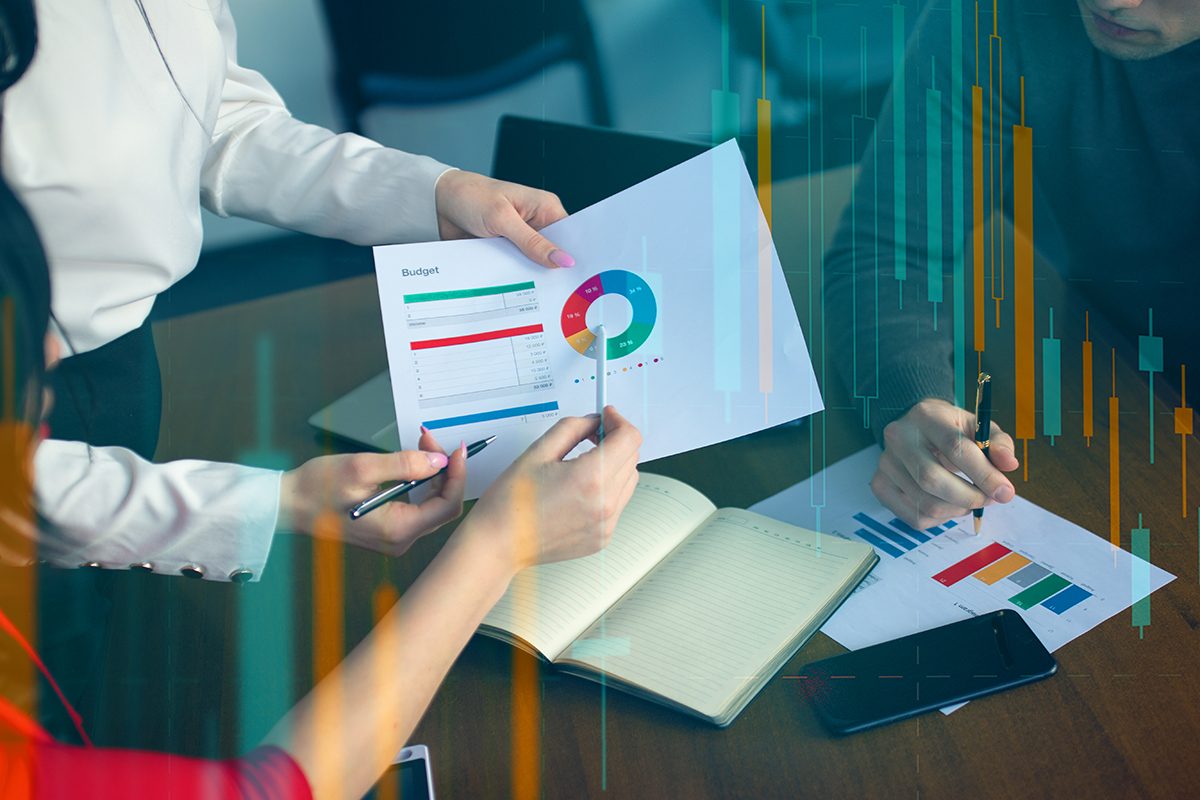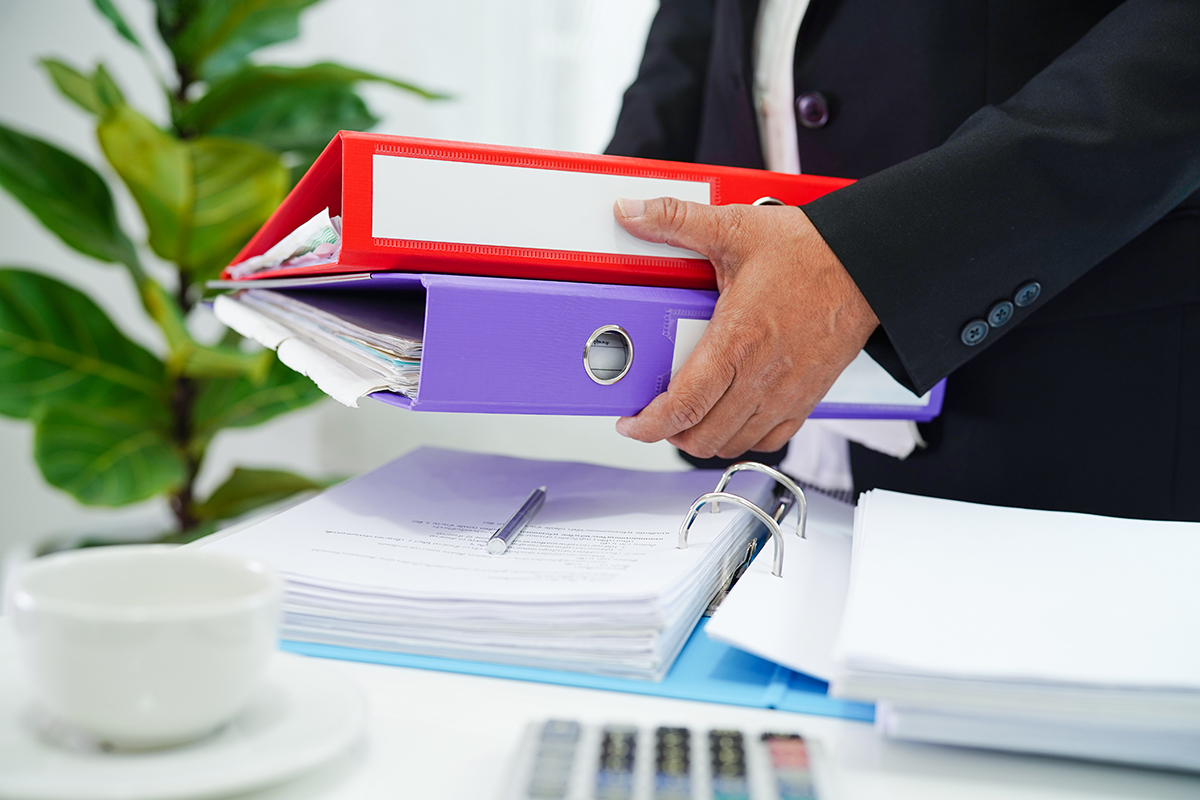An identity chart is a visual tool for helping individuals, such as students, teachers, counselors, or social workers, explore, analyze, and reflect on different aspects of their identity.
This includes personal characteristics, experiences, beliefs, and social identities. By using this chart, they can gain a deeper understanding of their sense of self, self-reflection, self-discovery, and personal growth. Moreover, the framework is meant to help people explore their identities in a holistic manner, including intersections and complexities of their unique personalities.
It is important to understand one’s identity as it promotes self-awareness and empathy. In addition, you can easily navigate through life and recognize your unique strengths, values, and challenges. This promotes self-confidence and self-esteem. It also helps you appreciate and respect diversity and inclusion. Hence, you can improve your relationships and reduce bias and pre-conception. Therefore, filling out an identity chart is an effective way for you to understand who you are, what you value, and how you view yourself within society.
This article will guide you if you are interested in exploring and reflecting on your own identity. It will show you how to fill an identity chart using a template, the benefits of using it, and how to effectively customize it. There are free, blank, and editable templates for identity charts that you can access, alongside examples you can review for your ease.
What is an Identity Chart Template?
An identity chart template is a structured format that is meant to help you explore, organize and understand different aspects of your identity.
It enables you to have a visual representation of your qualities and characteristics. It has different sections, including race, personal interests, ethnicity, religion, sexuality, family background, culture, and gender. By filling these sections, you will learn more about your strengths, experiences, values, and challenges leading to personal growth and self-awareness.
Free Templates


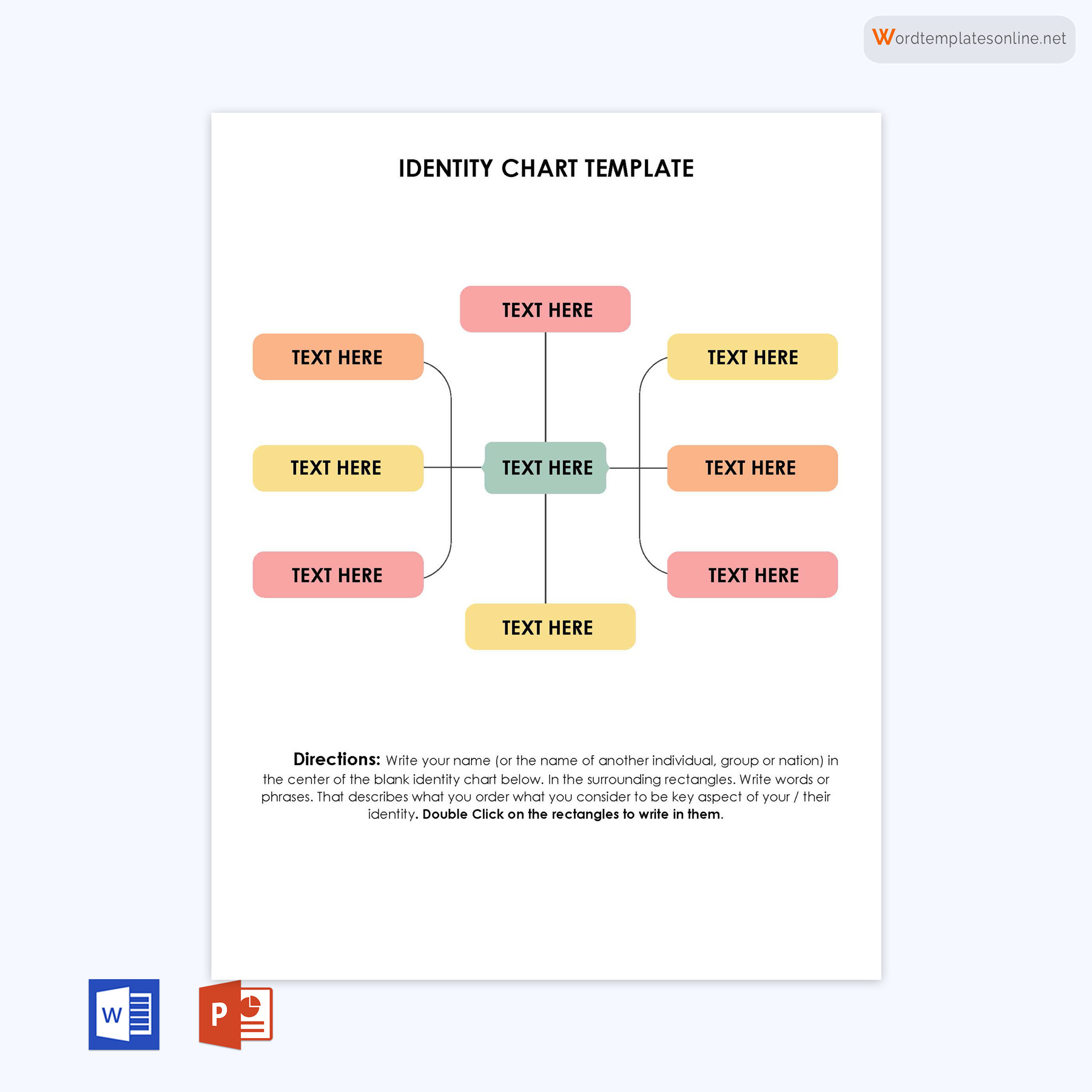
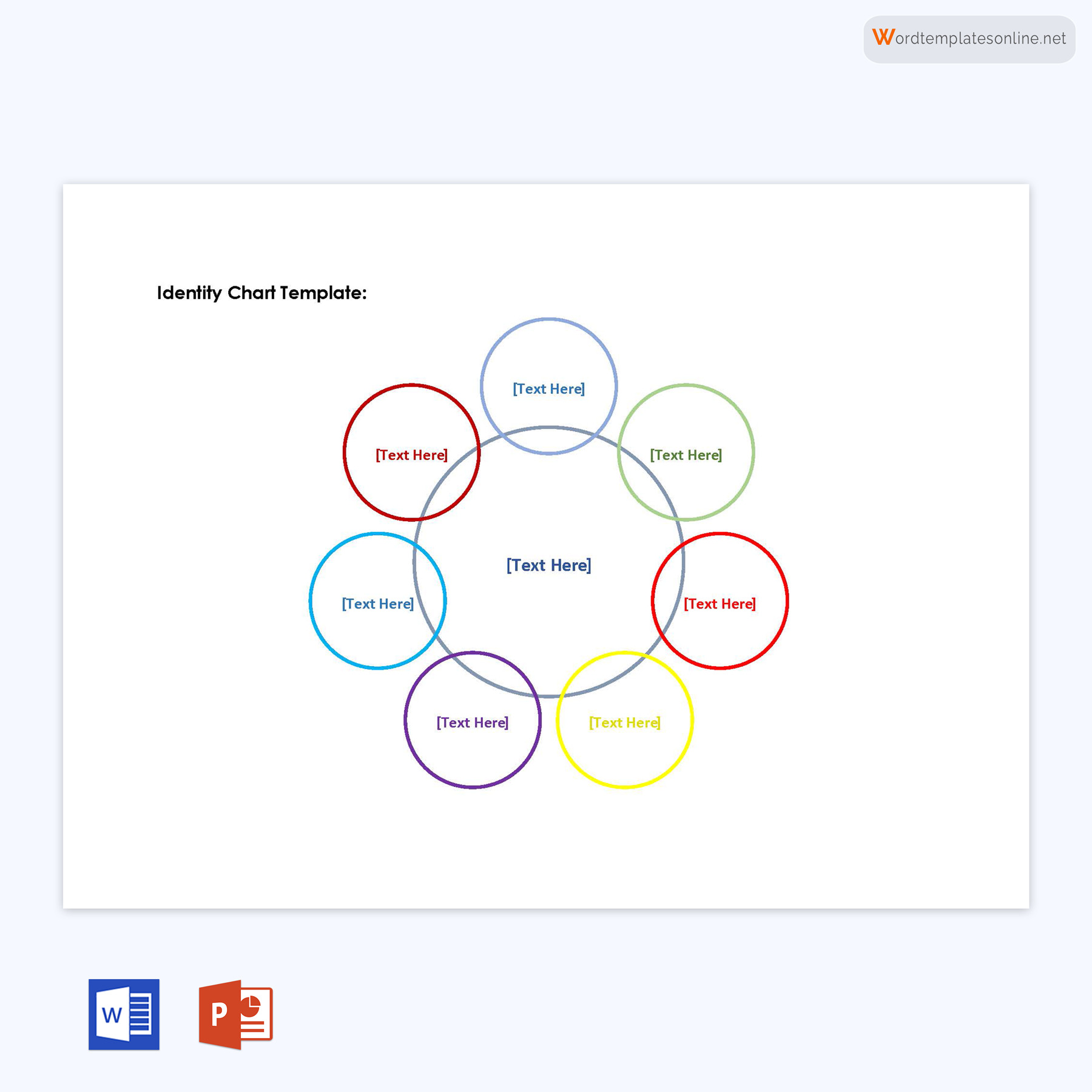
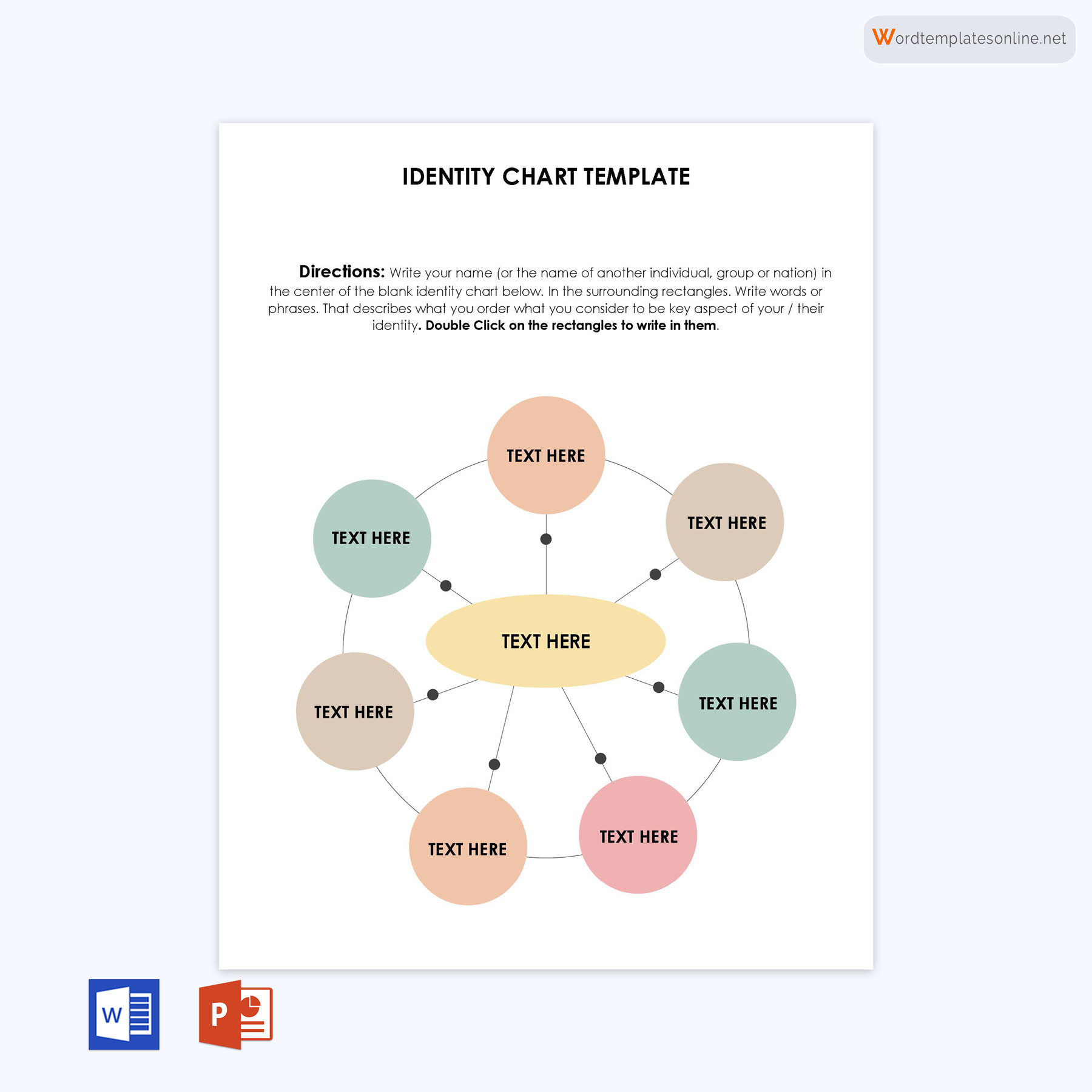

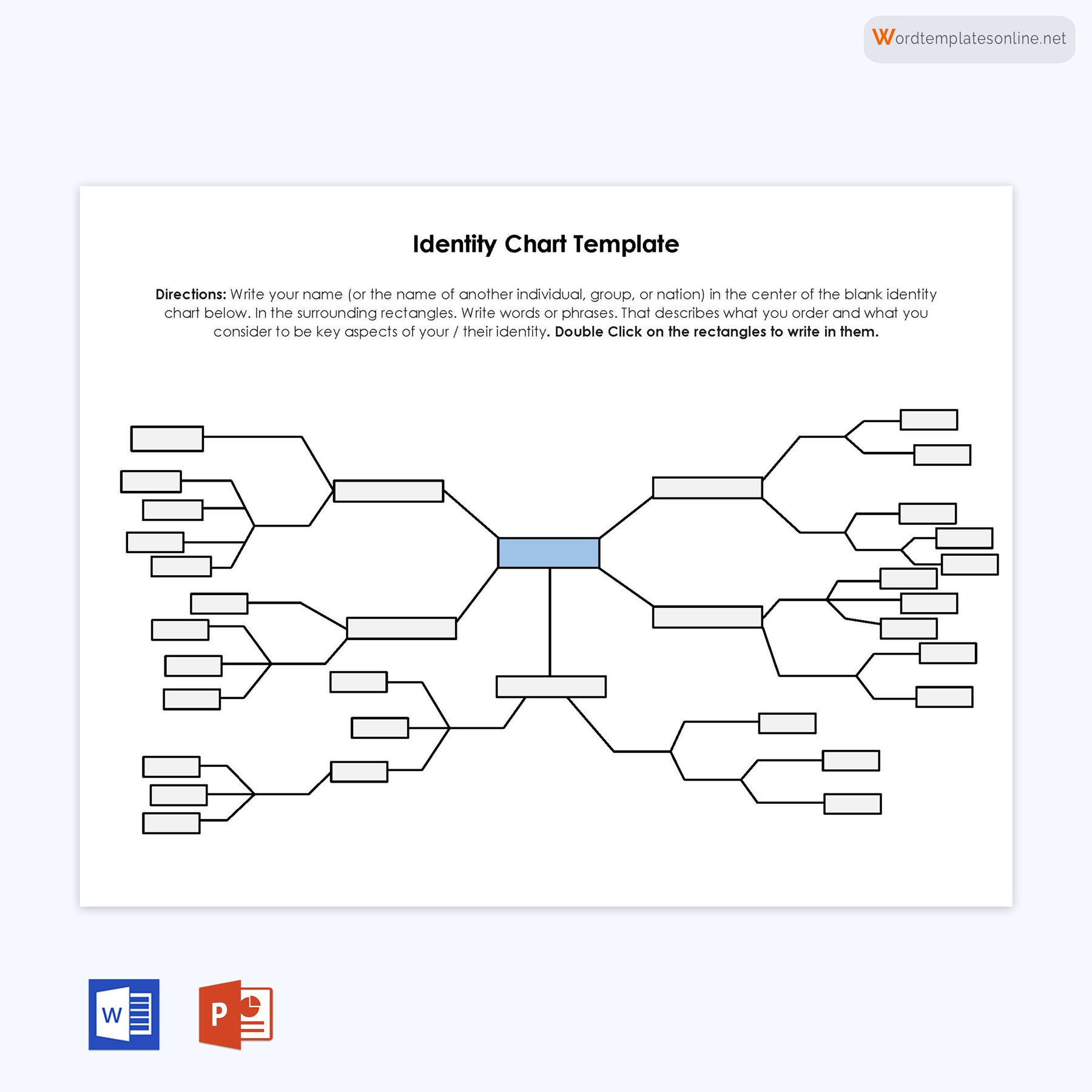
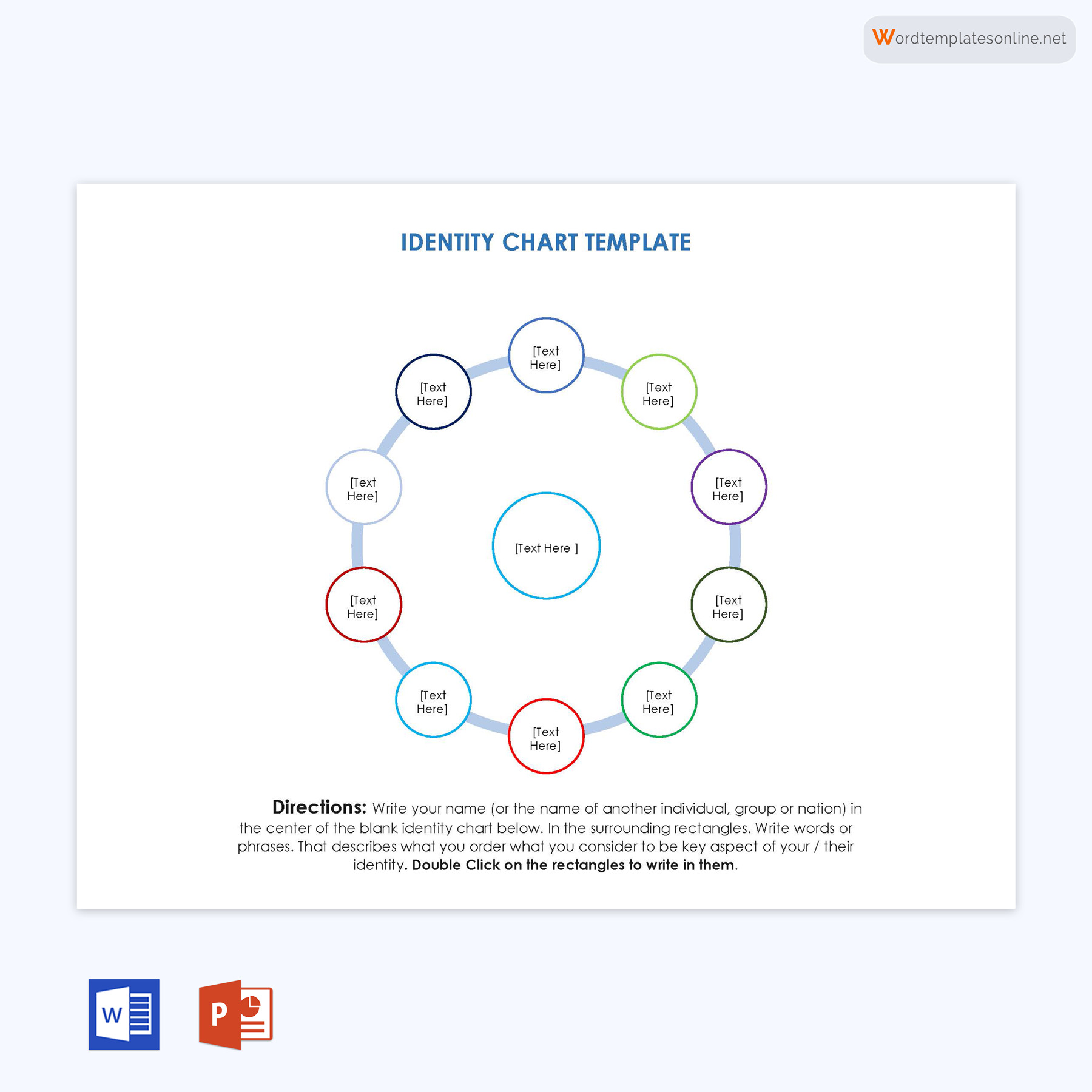
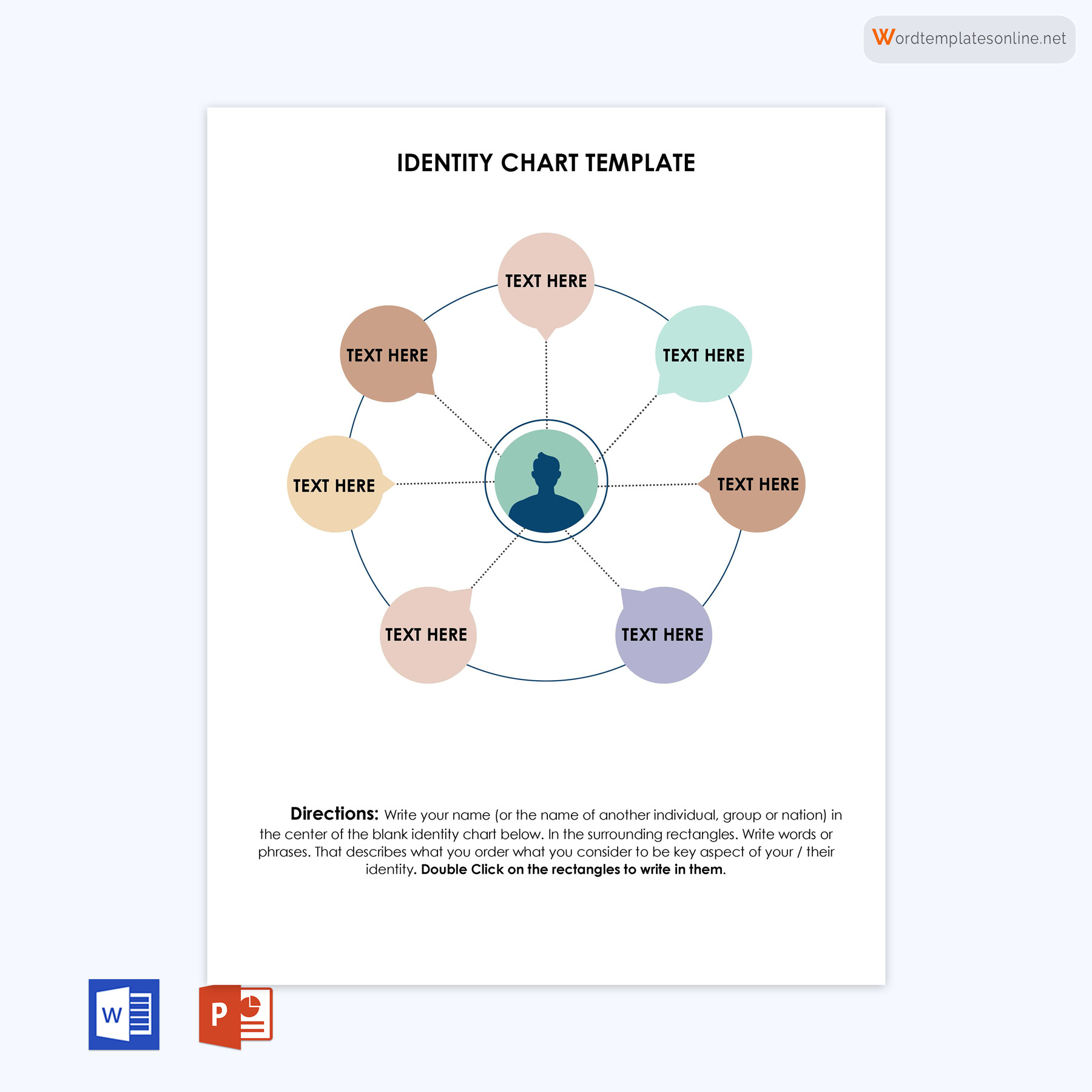
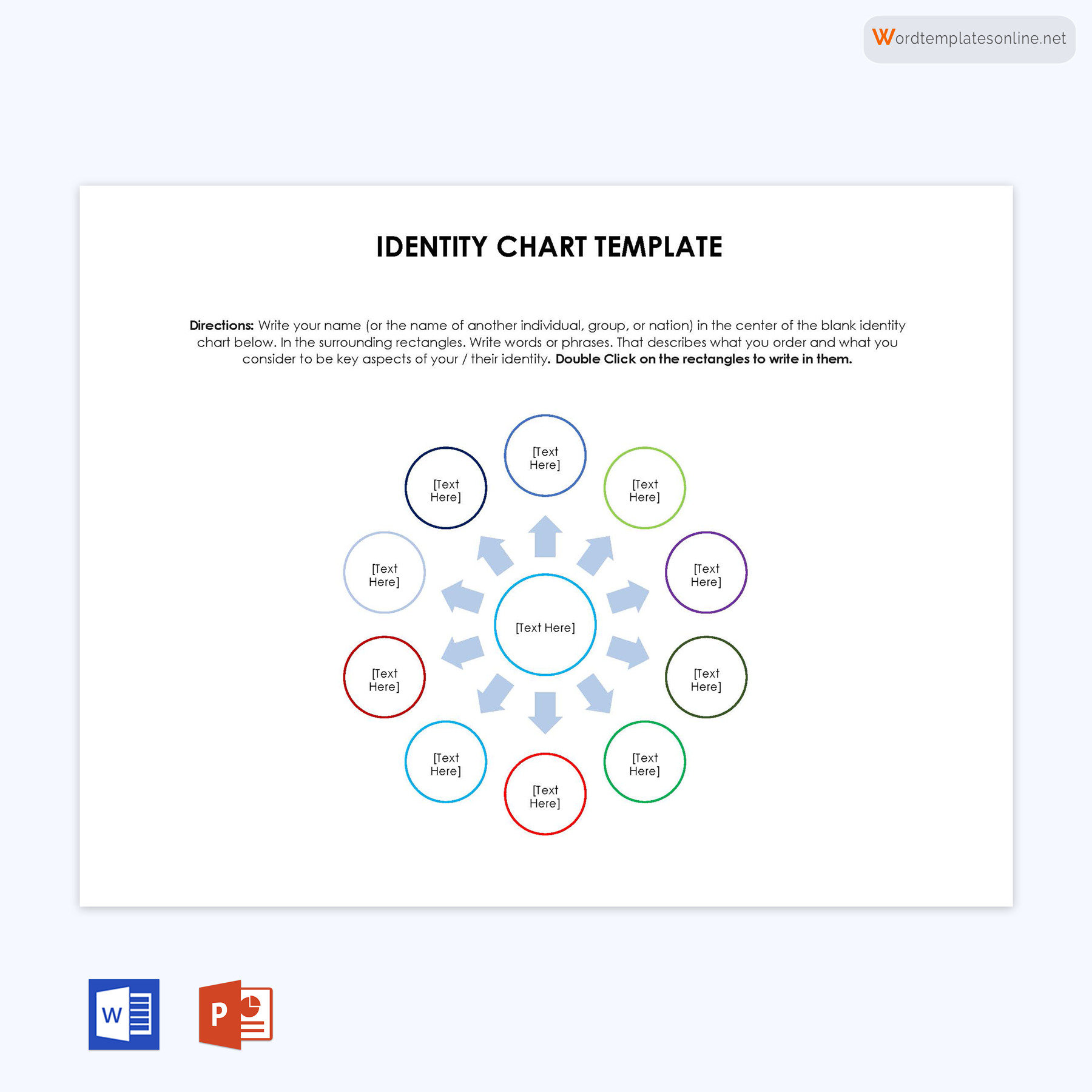

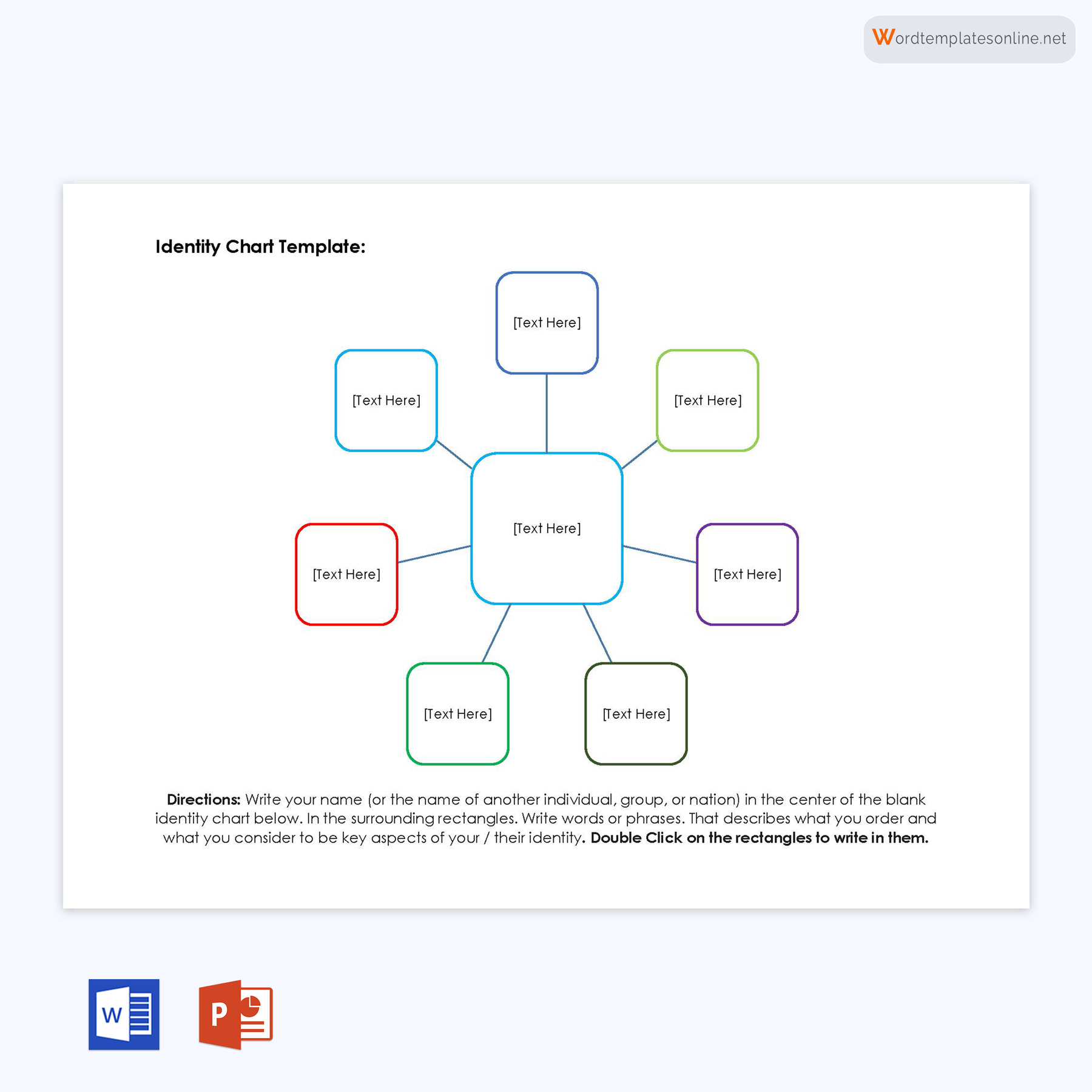
Charting Your Identity: How Templates Can Help
The process of discovering and understanding your identity can be challenging, especially in today’s society which is constantly flooded with different ideals and beliefs. That is why it is advisable and beneficial to use a template to chart your identity. This structured format will guide you through the process and make it simpler.
Below are some of the ways a template can help you learn more about your identity.
Provides structure and guidance
A template offers a clear structure for reviewing and reflecting on various identity aspects. It may contain prompts or questions in each section that will guide you on where to start and what to expect. Therefore, the identity exploration process becomes easier and less overwhelming for you.
Promotes organization and clarity
It promotes organization and clarity by providing a proper visual representation of the different identity dimensions. This makes it easier for you to see how these dimensions are interconnected. Thus, you can establish commonalities and identify patterns across different aspects of your identity for a better understanding.
Facilitates self-reflection and insight
This tool is also valuable when it comes to self-reflection and gaining a deeper understanding of who you are. The template will enable you to explore various aspects and, hence, encourage you to self-reflect on your experiences, values, strengths, and challenges. The idea is to guide you in uncovering patterns and making connections across different dimensions of your identity.
Encourages creativity and self-expression
The template for an identity chart encourages creative self-expression by providing spaces for drawings, writings, or personal anecdotes. This creative space allows you to explore your identity beyond just basic words. That means you can freely and easily express your personality in unique ways. Furthermore, through creativity and self-expression, you can better understand your emotions, passions, and aspirations, leading to a better self-understanding.
It can be used in a variety of contexts
Finally, this visual tool is flexible and can be used in various contexts. It can be used in educational settings to initiate discussions on diversity, equity, and inclusion while allowing students to learn from each other’s life experiences. Professionals in counseling or therapy settings can also use it to assist clients on their journey to self-discovery and personal growth. With such versatility, this template chart is significantly useful to you.
How to Fill an Identity Chart Template: Step-by-Step Guide
When it comes to filling out this chart, the process can be engaging and insightful if you know what you are doing. You need to follow the steps outlined below to properly explore your identity and understand who you are.
Here is a step-by-step guide to filling out this template:
Step 1: Begin with personal information
Start by entering your personal information, including your name, age, and other identification details, in the template. This sets the framework for your identity exploration.
Step 2: Explore your demographic identity
Establish your demographic identity, which includes your race, language, ethnicity, and nationality. Proceed to determine how these aspects of your demographic identity shape your cultural background, heritage, traditions, customs, and values.
Step 3: Reflect on your gender identity
For your gender identity, start by establishing how you identify, that is, as male, female, non-binary, or any other gender identity. Focus on how this identity influences your experiences and self-perception.
Step 4: Consider your sexual orientation
The next step is to reflect on your sexual orientation by mentioning if you are heterosexual, homosexual, bisexual, or any other sexual orientation. Consider how your identification affects your attractions, sense of self, and relationships.
Step 5: Explore your family and relationships
You should also fill in your family and relationships information in the template. This includes parents, siblings, and the extended family. Focus on how your family dynamics impact you and describe that aspect in the chart template. Furthermore, ensure that you highlight any important relationships or partnerships you have created and describe how they contribute to this dimension of your identity.
Step 6: Identify your interests and hobbies
Explore your interests, passions, hobbies, and any other activities that bring your fulfillment. Review how these activities and interests impact your sense of self and allow for personal growth and self-expression.
Step 7: Consider your education and career
This section of the template will help you review your educational background, current studies, and career or profession. Consider your aspirations and goals while reflecting on how your education and career help in shaping your identity and future path.
Step 8: Examine your beliefs and values
The next step of filling out the template should be about examining the beliefs, values, and principles that guide your actions and shape your perspective. This includes religious, spiritual, or philosophical perspectives that are significant to you. Try and determine how these beliefs and values shape your decision-making process and interactions with others.
Step 9: Reflect on significant experiences and influences
For step nine, reflect on those important experiences that have impacted you, including challenges, personal growth, or significant events. Moreover, consider the influences you have had and how they have contributed to shaping your identity. Influential people in your life include mentors, family members, or cultural icons.
Step 10: Identify your strengths and challenges
For the final step, identify your personal strengths and challenges. Review your skills, talents, and qualities to determine how they contribute to your sense of self. In addition, reflect on the areas that are difficult for you and how you can deal with such challenges.
This guide can be modified to accommodate additional sections to your template based on your preferences and the purpose of identity exploration. However, it is important to follow the step-by-step guide and take your time to review each step. This way, you will discover new insights about yourself and thoughtfully reflect on who you are. The process of filling out the chart template is meant to be fulfilling and transformative, as the discoveries will guide you on a journey of personal growth.
note
Instead of drawing it, there are blank and free editable templates for identity charts you can use for your ease. They can be downloaded in both PDF and Word formats and accessed in digital or printed versions. Once you download this template, you should fill in the available sections to chart your identity. Additionally, their editable features make them easy to customize to suit your preferences and convenience. The idea is to help you establish and explore your unique identity.
Common Tips for Customizing the Template Effectively
Below are some tips that you should consider when customizing your template to ensure that you have an effective identity chart:
- Always organize the layout and format of your template by deciding whether you want a digital or printable version. Also, ensure you select the sections, headings, and visual elements that you will include in the template to make it appealing and easy to use.
- Customize your template to make it versatile, especially if you intend to use it for various contexts. It should accommodate different aspects of your identity and allow for modifications.
- Use creative ways, such as drawings, symbols, or quotes, within the template to express your identity. The idea is to personalize your chart and add depth to your exploration.
- Once you have your chart template, test it by asking others to fill it out or by gathering feedback from focus groups. This will help you refine your structure based on their suggestions to make it user-friendly, inclusive, and effective for its purpose.
Putting It All Together
A template for an identity chart is an effective visual tool meant to enable you to gain a deeper understanding of your own identity. By filling out the chart, you can go through the process of reflecting on various aspects of your identity to understand who you are and what influences your perspectives. Using a template to chart your identity is easy, time-saving, and effective.
It has several sections that will aid you on your journey of self-reflection. This will contribute to better relationships and a greater appreciation of diversity and inclusion. The template is versatile; hence, useful for both personal and professional settings. It is advisable to use the step-by-step guide provided to fill out the chart and learn more about yourself. You can download blank and editable templates for free in PDF and Word formats for your ease.
